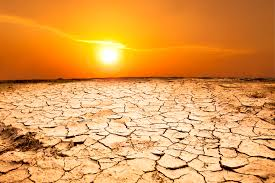G20 Climate Impacts Atlas
- 28 Oct 2021
On 27th October 2021, the ‘G20 Climate Impacts Atlas’ was released by the Euro-Mediterranean Center on Climate Change (CMCC), the leading Italian research centre on climate change and National Focal Point for the IPCC that collates scientific projections of how climate impacts will play out in the world's richest countries over the coming years.

Major Findings
- The report finds that without urgent action to reduce carbon emissions, GDP losses due to climate damage in G20 countries increase each year, rising to at least four per cent annually by 2050.
- Climate impacts would tear through G20 countries without urgent action to reduce emissions, and in India, it could mean declines in rice and wheat production, causing economic losses of up to 81 billion euros and a loss of 15 per cent of farmers' incomes by 2050.
Impact on India
- Longer Heatwaves: Heatwaves are expected to last 25 times longer by 2036-2065 if the global temperature rises by 4°C, and over five times longer if it limited to 2°C and only one-and-a-half times longer if it is limited to 1.5°C. Along with low temperature rise, emissions also have to be reduced.
- Fall in Crop Yields: The yields of crops like sugarcane, wheat, and rice would fall as climate change heats up the environment. These yields are bound to fall even if there is adequate supply of water and nutrients, and the impact of floods and storms are minimal.
- Rise in Demand for Water: The demand for irrigation water is expected to rise by 29 percent by 2050.
- Frequent Draughts: If the global rise in temperature is indeed 4°C, then the frequency of droughts will increase by 48 percent by 2036-2065. If the rise is by 2°C, then the frequency rate becomes 20 percent, and with a 1.5°C rise, it becomes 13 percent.
- Fall in Fish Catch: A reduction of 8.8 percent by 2050 could be seen in potential fish catch fall if emissions are lowered, but almost double that rate (17.1 percent) if emissions remain high.
- More Flooding Events: Approximately 18 million Indians are vulnerable to flooding by 2050 because of high emissions, as opposed to the 1.3 million today.
- Drop in Total Labour: The report also warns about a drop in total labour, which is estimated to fall by 13.4 percent by 2050 if emissions are low.




